One of life’s greatest inconveniences can be a lack of transportation. And, maybe you don’t want to take an Uber or buy a bus pass for every time you want to go somewhere. But, buying a new car is such a big investment. Say you’ve been saving for a car, and you have $1500 to spend. You ask yourself, “Should I buy a new or used car?” There is the Winter Beater, which we at Big Red call hoopties. These are 10 years or older, and have over 150,000 miles on them. Also commonly known as fixer-uppers or jalopies, these cars average about $1500, putting them on the low end of car prices, but they seem to be almost on their way out. The hooptie is not to be confused with what we will be calling a used car here, which would simply be a car that has been formerly registered in another person’s name. The fixer-upper isn’t as nice as the used car, but, there’s a way to coax a daily driver out of one.
Rankings of Each Car
So, now you’ve got three options: buy a beater car, buy a new car, or buy a used car. Where are you going to spend your $1500? How do you decide which kind of car to buy? We’re going to look at three things to consider when searching for the car for you: affordability, fixability, and reliability.
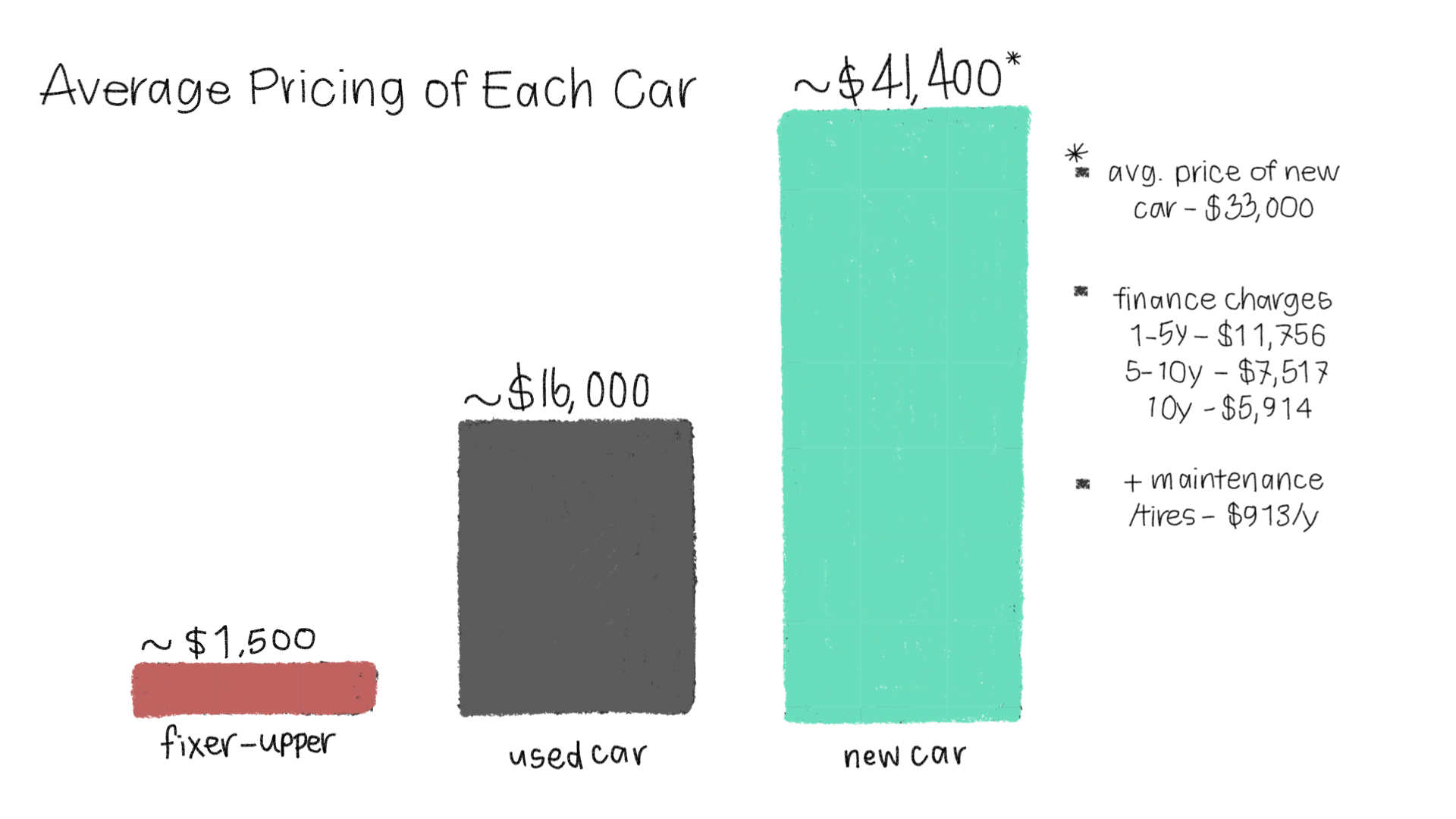
In the graph above, we show the various price averages of the three car options. From left to right, we feature the fixer-upper, the used car, and the new car. Included in the price of the new car: finance charges. We do not include maintenance in the price of any of the choices.
Pros of Buying a Fixer-Upper
Affordability
A fixer-upper car scores high on affordability and fixability. This is because it‘s cheap enough that you can buy it with cash; you won’t go into debt buying one. If you are in need of a car right now, this could be a good option for you. It can get you from point A to B, and also provide you with something to do, considering any repairs it would need to have done on it.
Fixability
If you enjoy car maintenance as a hobby, this could be a good car for you. And, if you keep your hooptie in good shape, it can be a vehicle you can rely on as well.
Cons of Buying a Fixer-Upper
Reliability
There are always downsides to each of these choices. While the hooptie is affordable and fixable, it cannot be relied upon to always work just the way you need it to, nearly as often as the new car or even the used car. You could find yourself staring down a bottomless pit of unknown repair fees, wondering when you should cut your losses and move on. Sometimes these cars just get too old. But again, if you keep this beater in good shape, the possibility of your car being this unreliable may not have to be a regular worry.
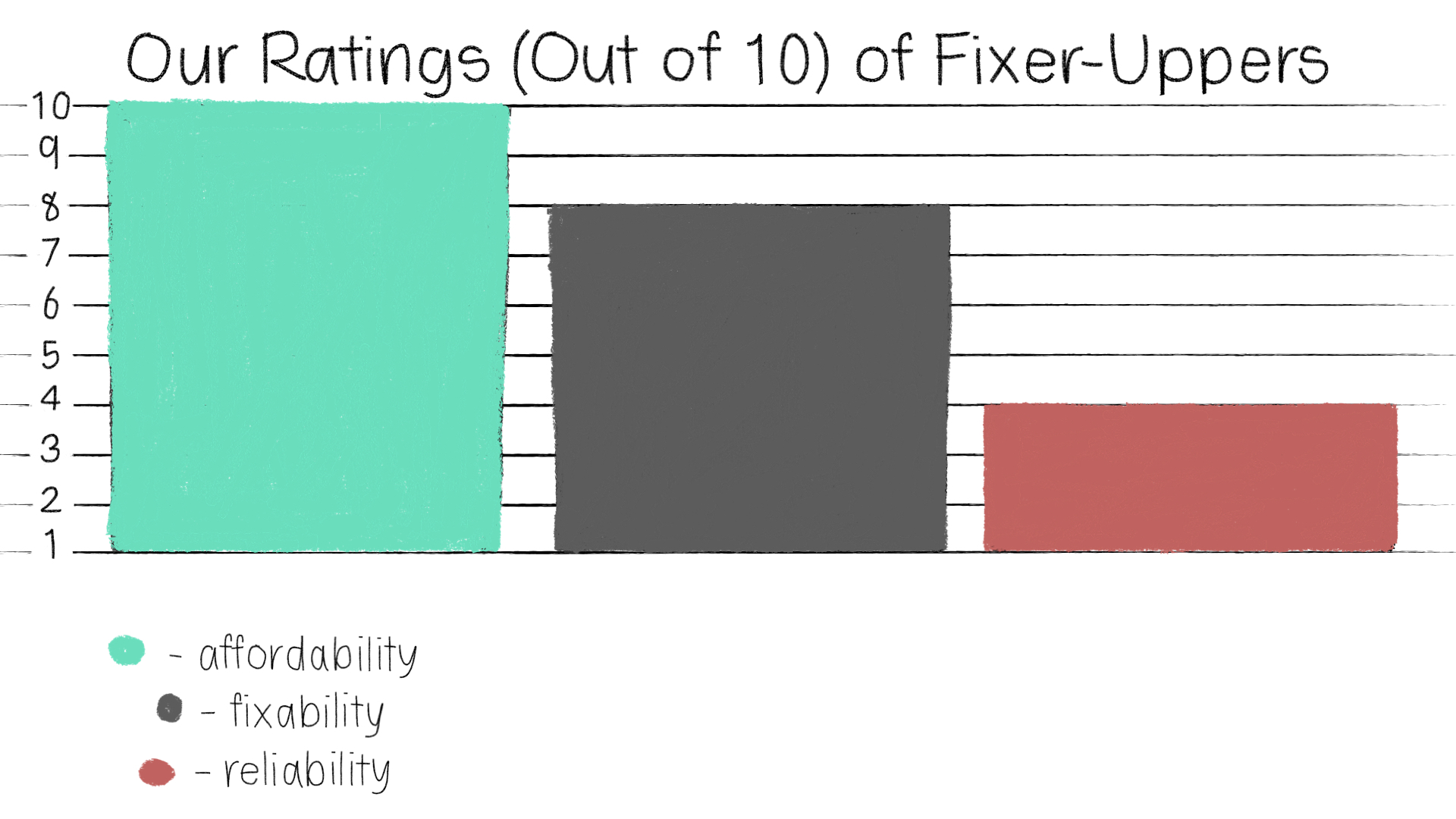
In the graph above, we rank fixer-upper cars in terms of affordability (teal), fixability, (gray), and reliability (red) on a scale of 1-10. 1 is least, 10 is most.
Pros of Buying a New Car
Reliability
If you decide to go with a new car, you can almost always depend on it for its reliability. This car has not been run down by years of use, and has never even been driven, except for the hopeful owners’ test drives. You know you can trust that this car will always start when you need it to, give you heat in the winter cold and A/C in the summer heat, and you know that it can, not only take you from point A to B, but also to C and D. You can spend your $1500 on a down-payment, and get a loan to cover the balance.
Cons of Buying a New Car
Affordability
Everyone resents the depreciation of value in a new car the minute they drive it off the lot. These cars are hardly affordable, and most people go into debt to buy one. This alone could be enough to turn one away from the idea, but there is another problem.
Fixability
These cars are not necessarily impossible to repair; but all of the extra features in these newer cars make for more and more things to be repaired if something breaks. However, when it is running, a new car is something you can rely on.
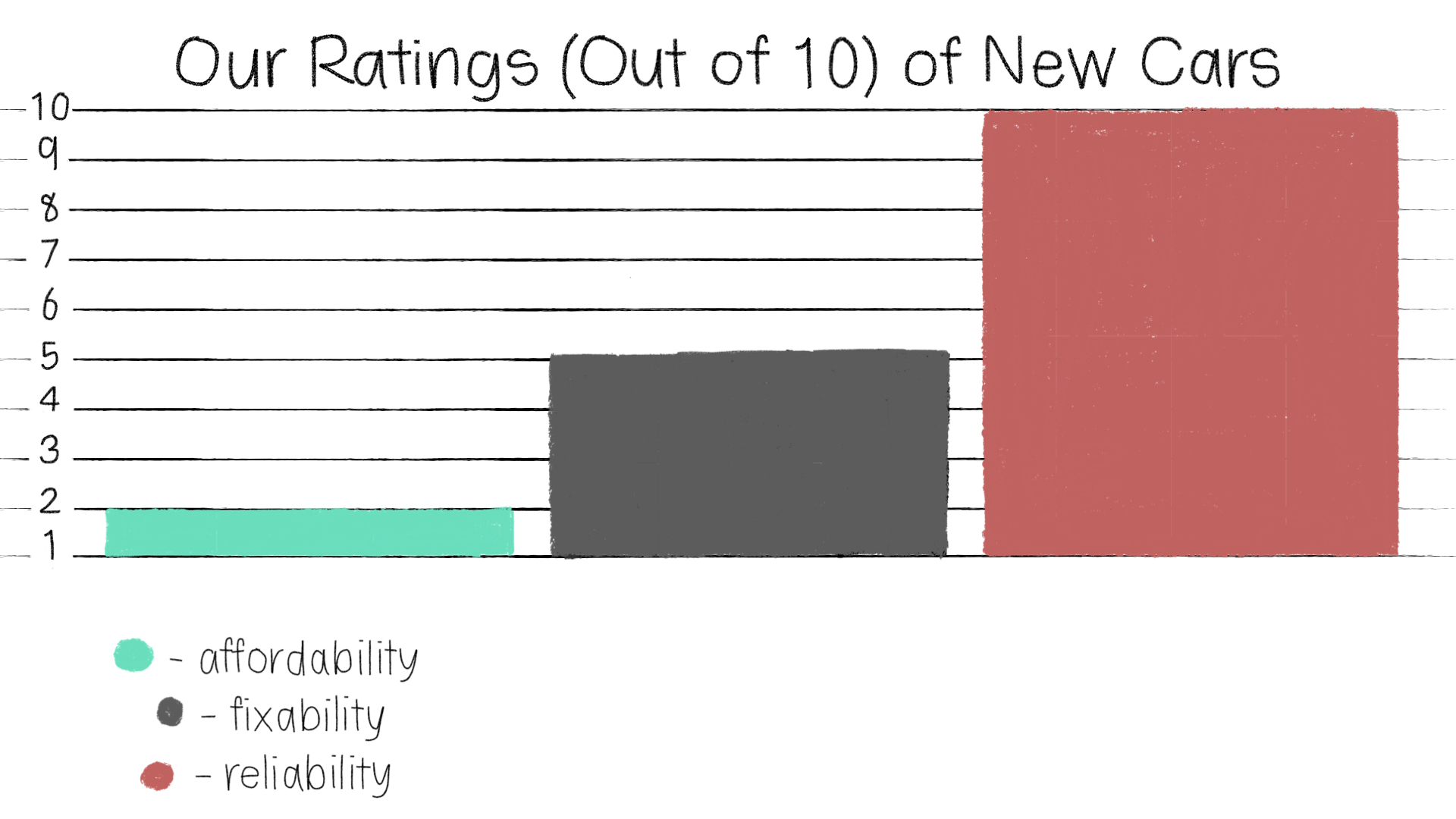
In the graph above, we rank new cars in terms of affordability (teal), fixability, (gray), and reliability (red) on a scale of 1-10. 1 is least, 10 is most.
Pros of Buying a Used Car
Affordability, Fixability, Reliability
The used car sits right in the middle, scoring higher than the fixer-upper in reliability, but still lower in affordability. You would need to spend the $1500 on a down payment and also get a loan for the balance, albeit a smaller loan than for a new car. The used car does combine all three of the criterion, but on a lower scale. You get average affordability, fixability, and reliability. But, if you are looking for something you can always rely on, without draining your bank account, the used car is a good option.
Cons of Buying a Used Car
Affordability, Fixability, Reliability
Since the used car is right in between the beater and the new car, and can have the pros of either one, it is reasonable to assume that it could also experience the cons of both. This car is more affordable than the new car, but much more expensive than that fixer-upper. It may be easier and/or less expensive to repair than a new car, but it may also experience problems that the beater would. Or, depending on the car, it could be a new one that had only been registered in someone else’s name first. In this case, the fixability would be a match to that of the new car.
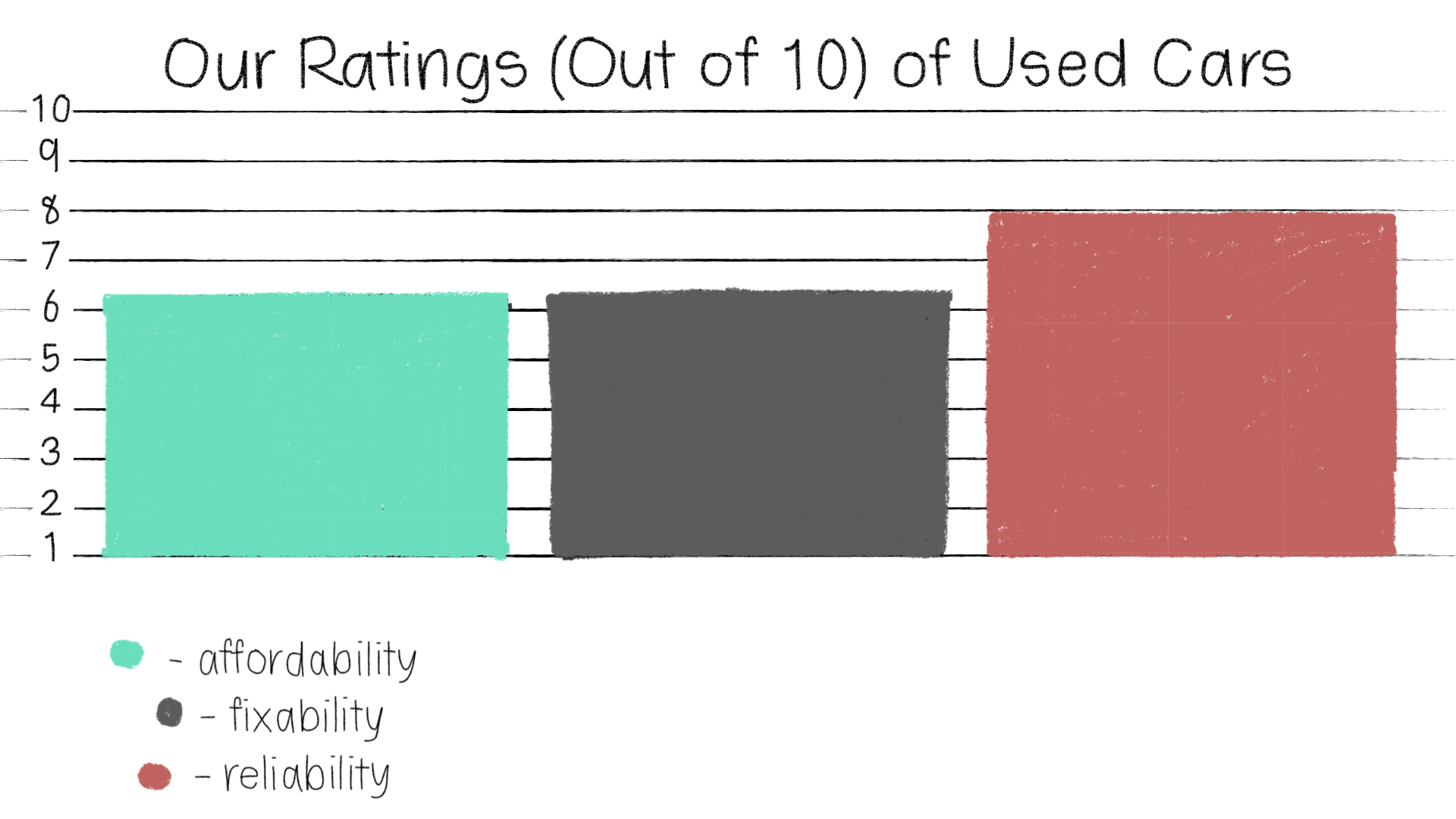
In the graph above, we rank used cars in terms of affordability (teal), fixability, (gray), and reliability (red) on a scale of 1-10. 1 is least, 10 is most.
Should I Buy a New or Used Car?
Now, you have three options. A hooptie, which is highly affordable and fixable, but not so reliable. There’s the new car, which is very reliable, but less affordable and fixable. And, finally, the used car, which is a little bit of all three. All three cars have their own compelling arguments. You should pay attention to them the next time you’re in need of a car. Buy new, or used? What will it be?
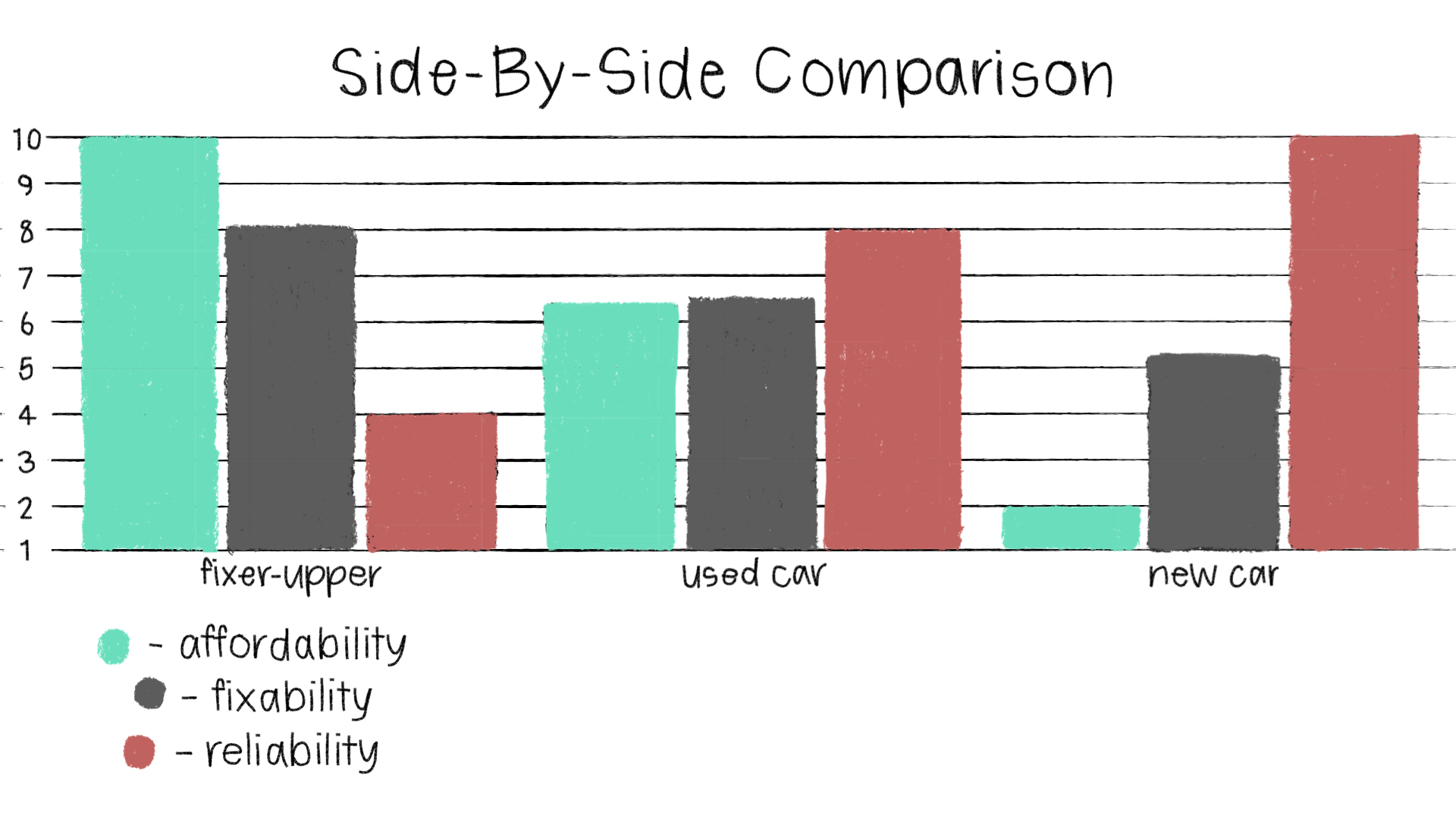
The graph above compares the rankings of all three cars in the terms above. They are ranked from 1-10, 1 being the least, and 10 the most.
